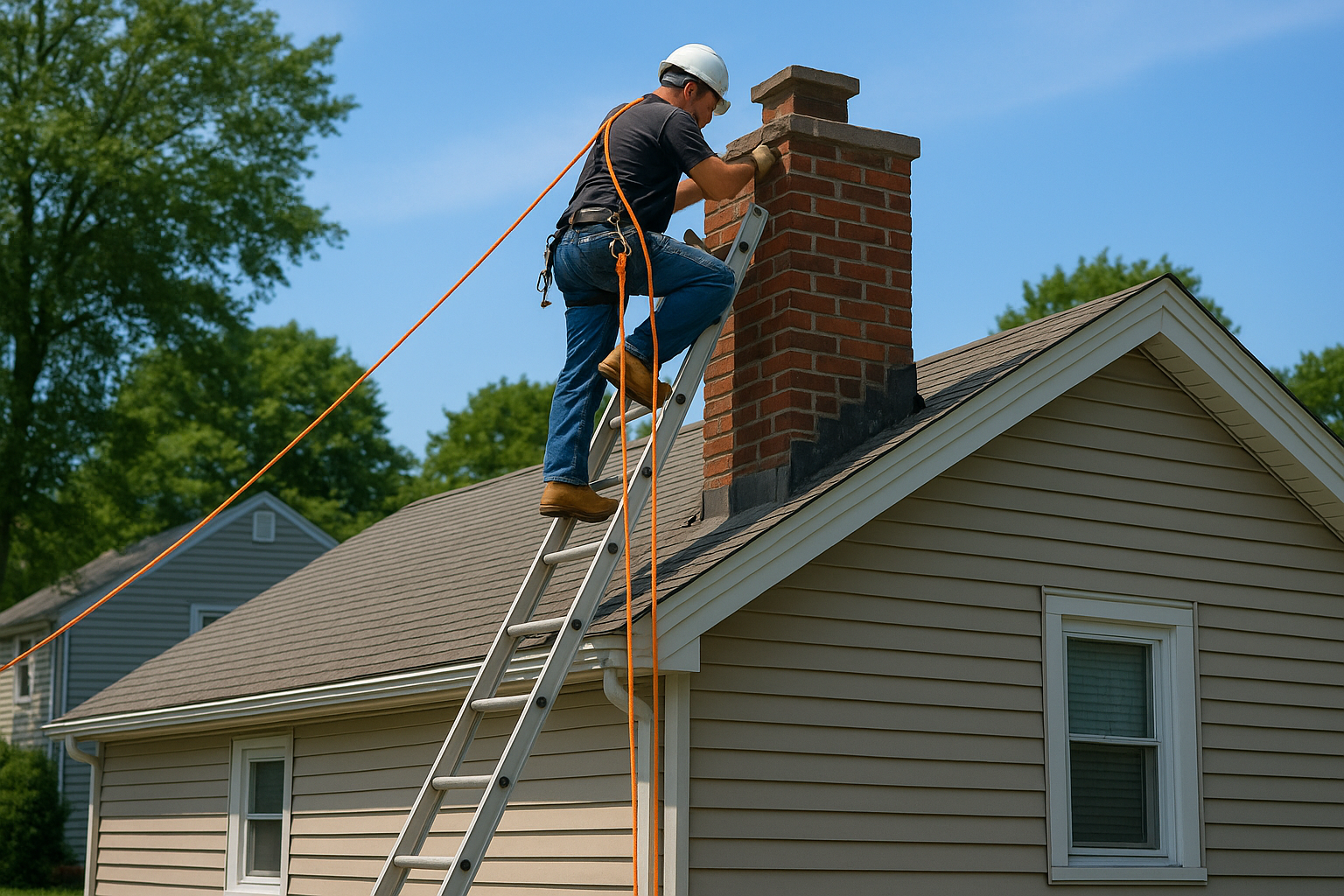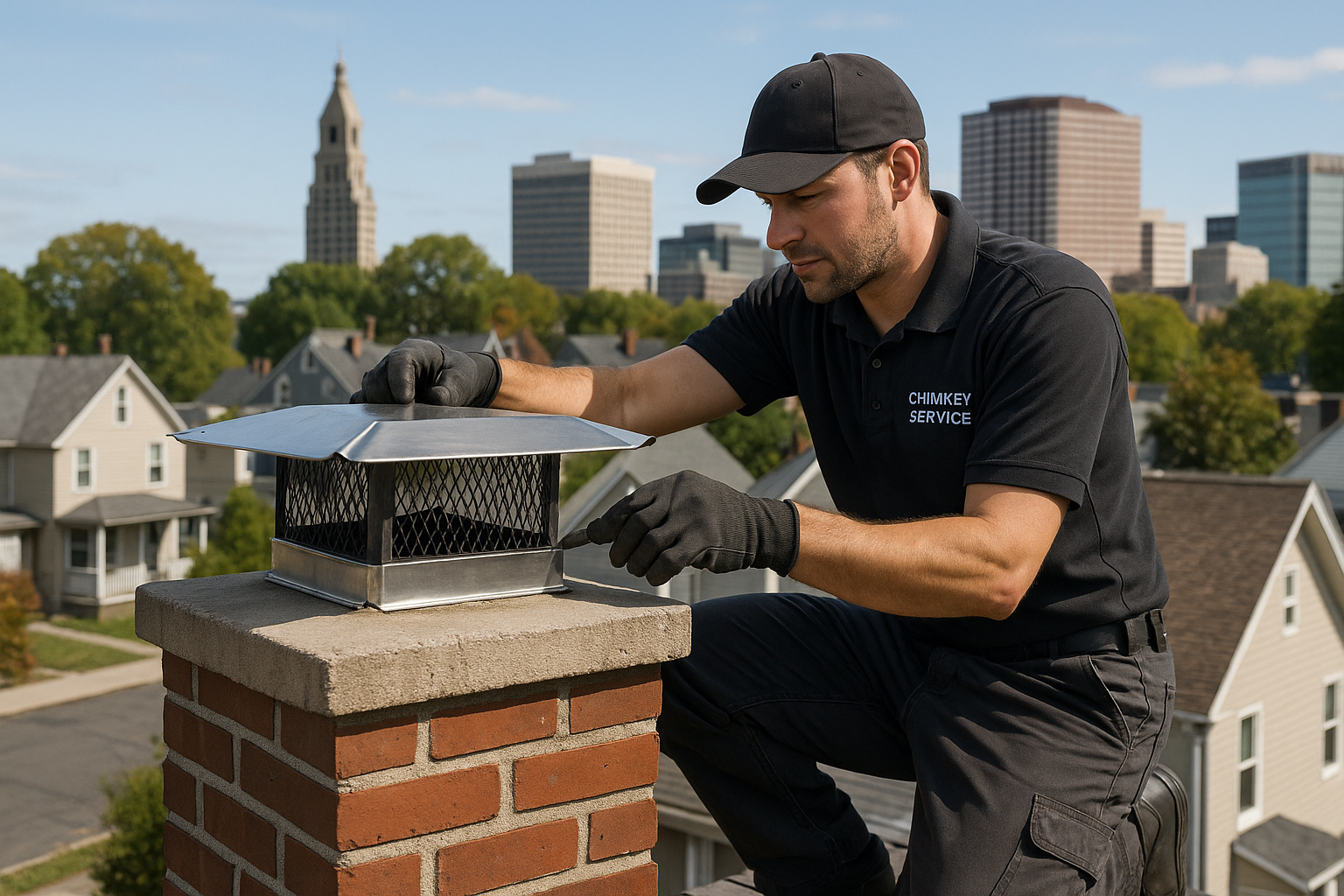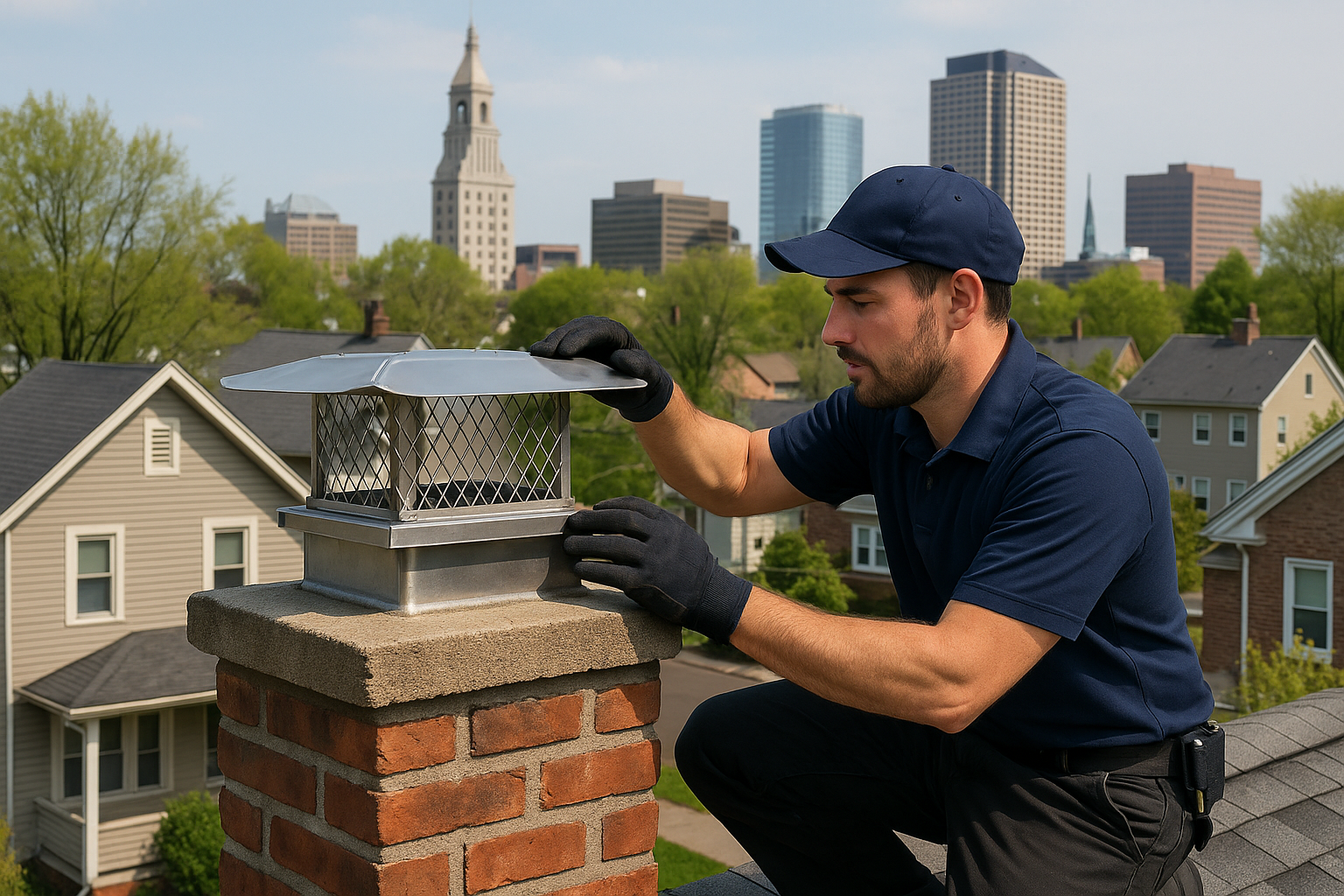Level 1–3 Inspections with Photo & Video Reports
A safe chimney starts with a clear-eyed evaluation. At Manchester Complete Chimney Sweep, we perform NFPA 211-aligned Level 1, Level 2, and Level 3 inspections for annual maintenance, real-estate transactions, appliance changes, and post-damage assessments. Expect careful documentation, plain-English explanations, and practical next steps that respect your budget.


Documented safety for real homes and real decisions
Chimneys live a tough life: expansion and contraction with New England temperature swings, wind-driven rain, freeze-thaw cycles, and the corrosive byproducts of combustion. Over time, tiny defects—loose mortar joints, cracked tiles, missing caps, deteriorated crowns, or warped dampers—become pathways for heat, sparks, and water. A thorough inspection doesn’t just “look around.” It verifies clearances, components, and conditions with repeatable, photo-backed checks.
Our inspections in Manchester, CT are designed to answer the questions that matter: Is this system safe to use? Will it draft properly? What repairs, if any, are warranted now versus later? You’ll receive an organized report with labeled photos, simple explanations, and prioritized recommendations you can share with buyers, sellers, insurers, or contractors.
When local homeowners call us
- Pre-sale or pre-purchase real-estate inspections
- Before first seasonal use or after heavy burning
- After storms, lightning, or chimney fires
- When installing or converting appliances
- Persistent leaks, odors, stains, or draft issues

Video scan clarity
Our HD camera reveals hidden flue damage and joint gaps you can’t see from the firebox or roof—evidence you can act on.
Inspection Levels: What We Do & When You Need Them
NFPA 211 defines three levels of chimney inspection. We follow these guidelines while tailoring our documentation to your specific goal—annual safety, a smooth real-estate closing, a code-compliant appliance change, or a post-event assessment after storms or chimney fires.
Level 1: Annual Condition Check
For systems that have been used regularly without changes, a Level 1 inspection verifies the readily accessible portions of the chimney and appliance. We assess the firebox, damper, exposed chimney, basic clearances, and visible portions of the flue from the firebox and cap. We look for soot accumulation, creosote levels, obstructions (nests, debris), and any visible defects that could impair safe operation. Many homeowners pair this with an annual sweep for a clean, ready-to-burn system.
Level 2: Real-Estate, Appliance Changes, or After Events
A Level 2 inspection is required when you’re buying or selling a home, changing appliances, relining, or after an event (like a chimney fire or severe weather) that might have caused damage. In addition to the Level 1 checks, we evaluate accessible portions of the attic, crawlspaces, and basements where the chimney passes; we verify clearances to combustibles; and we perform a video scan of the flue’s interior. You get a more complete picture of tile integrity, mortar joints, offsets, and hidden defects.
Most of our Manchester, CT real-estate clients choose this level because it provides objective, visual documentation. Our report helps buyers make informed decisions and can reduce surprises during negotiations or underwriting.
Level 3: Invasive, When Serious Hazards Are Suspected
A Level 3 inspection is reserved for scenarios where we have reason to believe there is concealed damage that cannot be confirmed without opening up finished areas or removing components (such as caps, chase covers, or sections of the chimney). This might follow a confirmed chimney fire, significant structural movement, or persistent, unexplained hazards noted in Level 2. We discuss scope and obtain authorization before any invasive work begins, then document findings thoroughly so repairs can be targeted and effective.
What our reports include
Clear narrative findings, labeled photos, video stills (when applicable), priority levels (“address now,” “monitor,” “upgrade optional”), and recommended next steps with plain-English explanations. You’ll know what’s safe, what isn’t, and why.
Code- and manufacturer-aware
We consider typical NFPA 211 guidelines and common manufacturer requirements for prefab systems, liners, and dampers. When we flag an issue, we explain it in normal language and show the evidence, not just jargon.
From Booking to Photo-Backed Report
We keep the steps simple and the documentation thorough, so you can make decisions quickly and confidently.
 1
1
Book & Prepare
Call (860) 362-9158 or use our form. We’ll confirm your goals (annual, real-estate, appliance change) and send simple prep tips.
 2
2
Inspect & Scan
We examine accessible components and—when indicated—perform a video scan of the flue to reveal otherwise hidden defects.
 3
3
Explain & Advise
We walk you through findings with photos and clear language. Safety issues are prioritized, and we outline options and costs.
Report & Next Steps
You receive a tidy report to keep or share—useful for closings, insurance, or future maintenance planning.
Common Issues We Find—And How We Address Them
Every chimney tells a story. In Manchester, CT, we frequently see the after-effects of freeze-thaw: hairline crown cracks that admit water, mortar joints that begin to powder, and flashing that pulls away under wind lift. Inside the flue, we might find fractured clay tiles, missing mortar at joints, or heavy glazed creosote from past burning practices. Below are typical findings and the next steps we’ll discuss if we encounter them.
Cracked or Missing Flue Tiles
Damaged tiles compromise the fire-resistance of the chimney and can allow heat to transfer to nearby framing. Depending on the extent, we may recommend relining with a UL-listed stainless steel system sized for your appliance. This both restores a smooth, continuous vent path and can improve draft.
Open Mortar Joints in the Flue
Gaps between clay tiles disrupt draft and create ledges that trap creosote. We photograph representative sections and explain how relining or targeted repairs address the root cause rather than just the symptom.
Crown Deterioration & Water Entry
The crown is your first defense against water. Hairline cracks widen as they cycle through freeze-thaw, allowing moisture into the chase and attic. Solutions range from crown resurfacing and new metal drip edges to full crown rebuilds, paired with a quality cap to shed water and block animals.
Missing or Ineffective Caps & Dampers
Without a proper cap, rain and pests find easy entry; without a functional damper, you lose conditioned air up the flue and struggle with draft. We size and install stainless caps and recommend top-sealing dampers that improve energy efficiency while sealing out downdrafts.
Heavy Creosote Buildup
When creosote is heavy—especially if glazed—we’ll outline safe removal approaches and improvements to moisture content, burning habits, and airflow that keep deposits in check going forward.
Chimney Fire Evidence
After a known or suspected chimney fire, a Level 2 (often Level 3) inspection is critical. We document cracked tiles, expanded joints, warped metal, and heat-stressed components. Repairs often include relining, smoke-chamber parging, crown work, and in severe cases, masonry rebuilding.
Real-Estate & Insurance: Paperwork that Works for You
Agents and underwriters prefer clarity. Our reports include the home address, inspection level, date, who commissioned the inspection, and detailed findings with photos. If repairs are recommended, we specify the area, probable cause, and consequences of inaction. This structure helps parties align quickly and reduces back-and-forth near closing.
Appliance Conversions & New Installs
Switching from wood to gas, adding a stove, or installing a new insert changes venting requirements. We verify flue sizing, liner compatibility, and clearances before you invest—so performance and safety are built-in, not an afterthought.
Draft, Odor, and Smoke Problems
Negative house pressure, cold chimneys, or incorrect sizing can make fireplaces misbehave. We evaluate these factors and recommend practical fixes—from caps and dampers to liner resizing or burn-practice adjustments—so your fireplace works the way you expect.
Level 2 Inspection + Video Scan
Ideal for real-estate and appliance changes. Includes accessible area checks and HD camera scan with labeled photos.
Chimney Inspection FAQs for Manchester, CT
Straight answers about levels, timing, and reports.
Need an inspection with proof you can share?
Book a chimney inspection in Manchester, CT with a team that documents clearly and explains in everyday language. You’ll know what’s safe, what isn’t, and the smartest next step.
